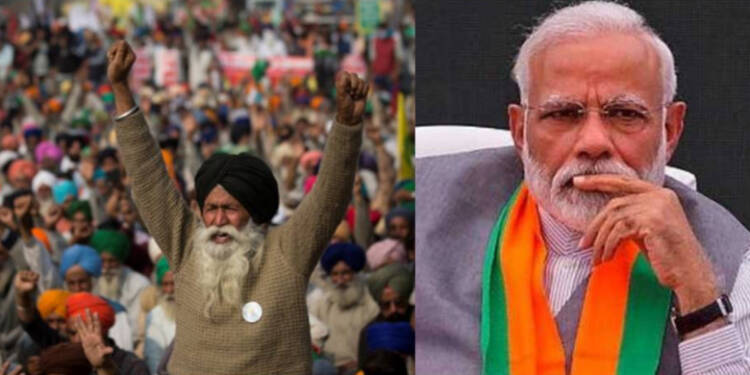The fake farmer protests in Punjab are ensuring that the BJP, which allowed Akalis to walk-out over the farm bills and decided to contest upcoming assembly elections alone, registers a huge victory in the state. The protest over the farm bill has been taken over by Khalistani elements and the whole scenario has become a polarizing issue in Punjab.
The state has 38.5 per cent Hindu population and 57.7 per cent Sikh population, of which only 21 per cent are Jat Sikhs who are at the forefront of this fake farmer protest. The Dalit Sikhs, who constitute a large percentage of the population (31 per cent), have traditionally voted for the Congress party, and this is the reason that the grand old party repeatedly comes to power in the state despite the stain of its involvement in the 1984 anti-Sikh riots.
The Jat Sikhs, who predominantly vote for Shiromani Akali Dal (SAD), enjoy a disproportionate share of political and economic power in the state. While the 33 per cent Dalit Sikhs have claim over just 3 per cent of the state’s total landholdings, the Jat Sikhs have claimed 80 per cent arable land with just 21 per cent of the population.
The Congress party often comes to power in the state with the support of Hindus and Dalits Sikhs, because both want to keep Akali Dal, supported by radical Sikhs, out of power. An often lesser talked facet of Bhindranwale cult is the cruelties it carried out over Dalit Sikhs because they opposed their fundamentalist interpretation of the faith.
Therefore, if BJP promises significant land reforms to bring Dalit Sikhs in its fold, then, with the support of 38 per cent Hindus, it can easily come to power. Both mainstream parties- the Indian National Congress and Shiromani Akali Dal- are heavily involved in corruption and supporting criminal activities in the state. The people of Punjab are so fed up with SAD and Congress that even AAP won 20 seats out of 117 in the last assembly elections. AAP, a newcomer which was fighting the assembly elections for the first time on the sole agenda of corruption-free governance (and appeal to some radical Khalistani elements), won 23.7 per cent votes and emerged as the second-largest party in terms of vote percentage as well as seats.
The SAD-BJP alliance could only win 18 (SAD won 15 out of 94) seats and just 11.2 per cent of the vote. With this, it was pushed to the third place in the state. Therefore, the SAD is nearly over in terms of its political prospects. A party which survives on corruption, hooliganism, and misgovernance definitely has no chance to come to power at a time when India has witnessed most transparent governance at the centre as well as in many states- by BJP as well as regional parties like BJD, TRS and others in the last few years.
So, SAD was surely baggage for BJP and nothing can be better than its exit from the alliance. At a time when the saffron party is expanding its footprint in the North-East and South – the regions where its presence was negligible, it can easily sweep over Punjab if it works hard for one and half years left in the next assembly elections.
Akali Dal continued its miserable run in the Lok Sabha polls last year and won only two seats, despite the fact that the Modi wave swept across the country and even the most unwinnable candidates secured victory in many constituencies. Despite its bad performance in the elections, the party still secured a cabinet berth in the Modi cabinet.
Therefore, the exit of Akalis was the best thing happened for Punjab BJP, and in the current circumstances, the party must aggressively expand its footprint among the Dalit Sikhs because the Hindus in Punjab will already vote for the party if it has a real chance in defeating the SAD and Congress, both of which will also cut the votes of each other.
































Hope so BJP should take this call and end the Akali-Congress trap from Punjab.